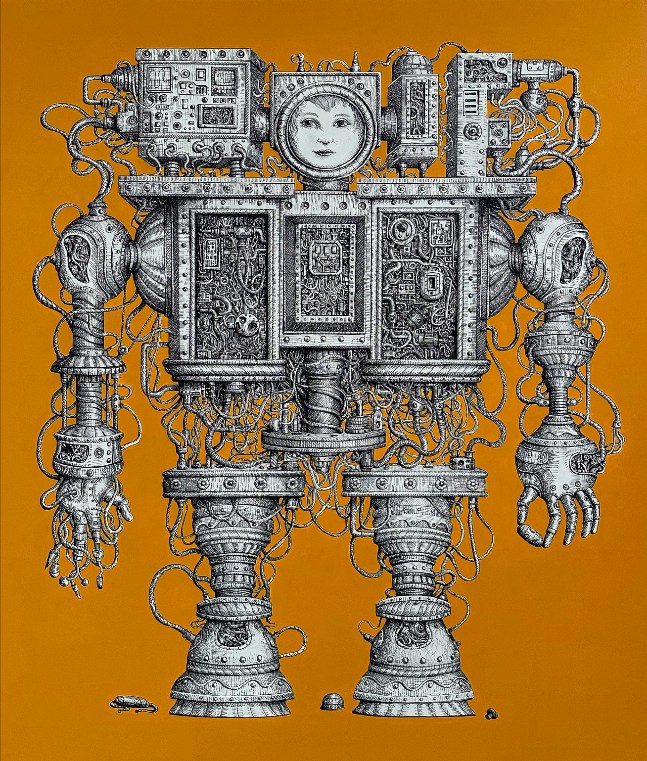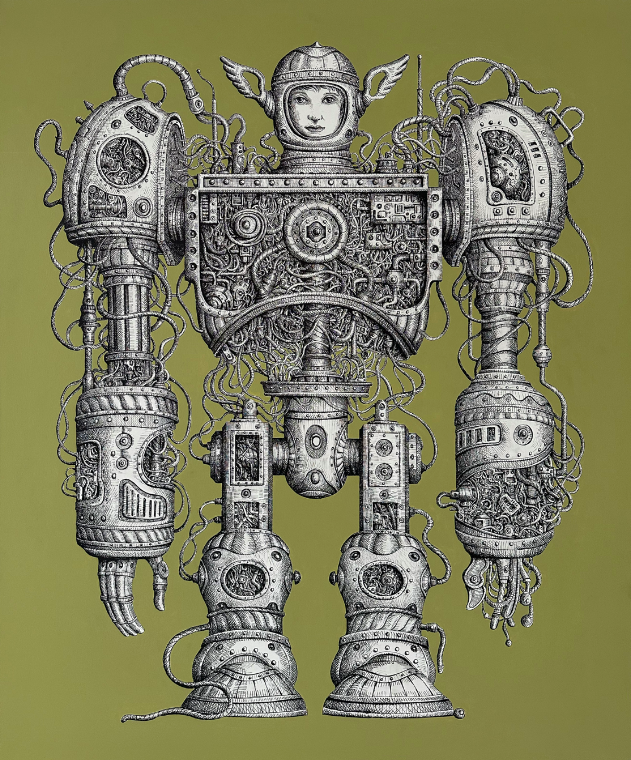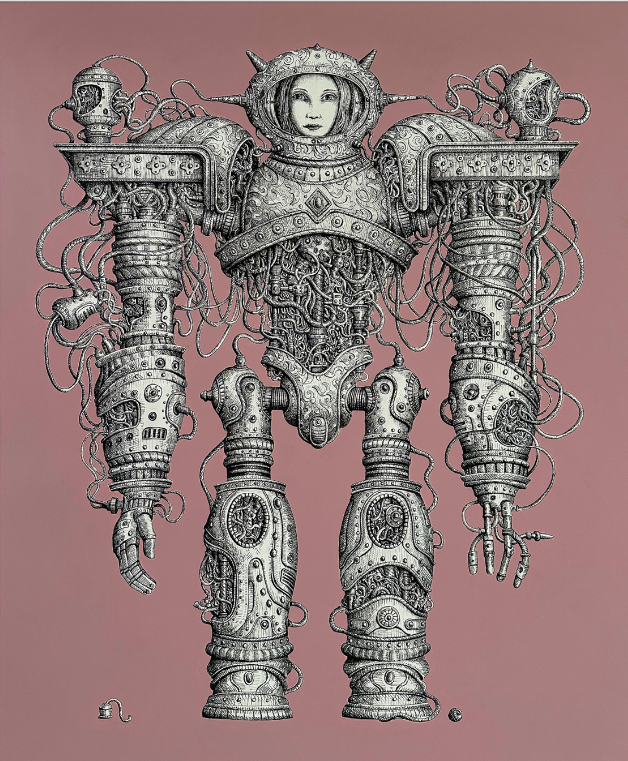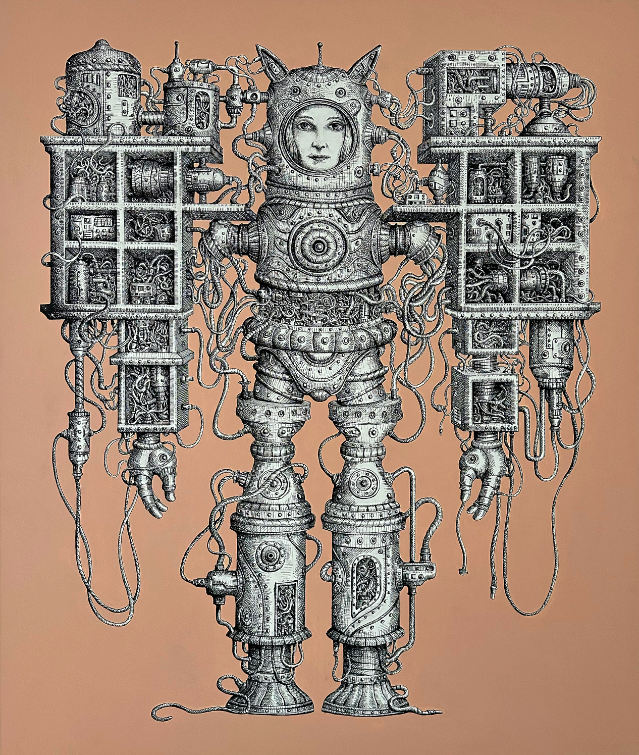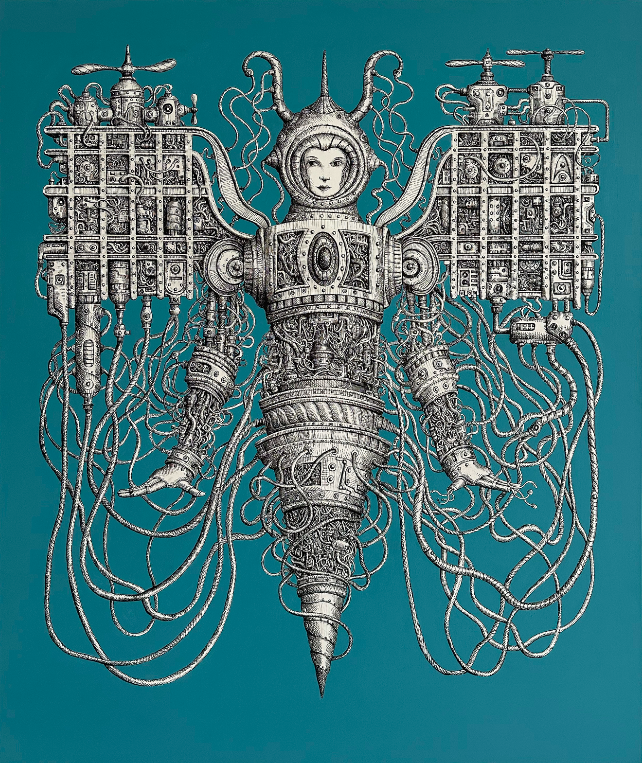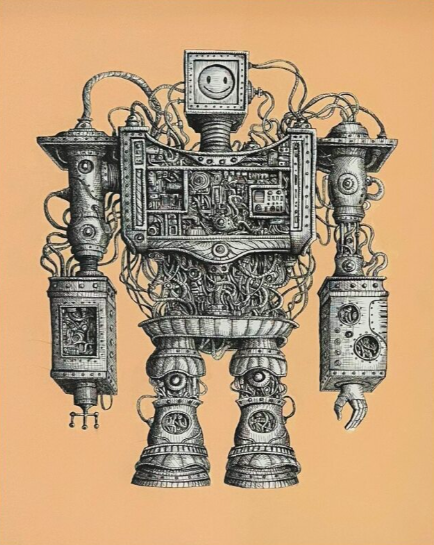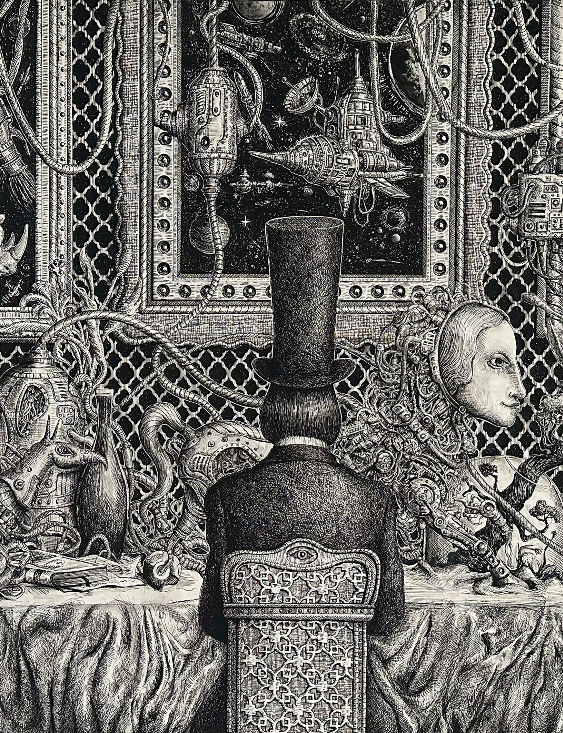Ömer Faruk Yaman’s Anima Machina exhibition reopens the discussion on the relationship between humans and machines through a fictional figure named Voyager. As a traveler observing contemporary technological systems from the outside, Voyager records the porous and ambiguous zones of human-machine interactions.
At first glance, the artist’s forms may appear to be composed of mechanical components, but they are not merely representations of industrial structures. These figures go beyond industrial symbolism, revealing the emotional and existential dimensions of the machine as it accompanies the human. Each drawing represents a modular consciousness, assembled piece by piece. At this point, the machine is no longer just a tool; it becomes an extension of human experience and a site where memory is reproduced in various forms.
This approach recalls Gilbert Simondon’s concept of “technical individuation”: the technical object is not a completed whole from the outside, but a being that continuously evolves with its internal dynamics and individuates alongside its environment. Similarly, Yaman’s figures are not fixed forms; they are timeless structures that evolve through the continuous recombination of parts, transforming and differentiating in the process.
Within the universe created by Anima Machina, the boundaries between human and machine become blurred. At times, a figure may appear to belong to the present day, while at other times, it takes the form of a hybrid being in which the distinctions between human and machine, organic and inorganic, dissolve. This transformation reveals that the technical is not external to the human, but an intrinsic component of it. In doing so, the exhibition moves beyond traditional narratives of mechanization and instead makes visible the emotional, cognitive, and existential connections humans forge with the technical in a multilayered dimension.
